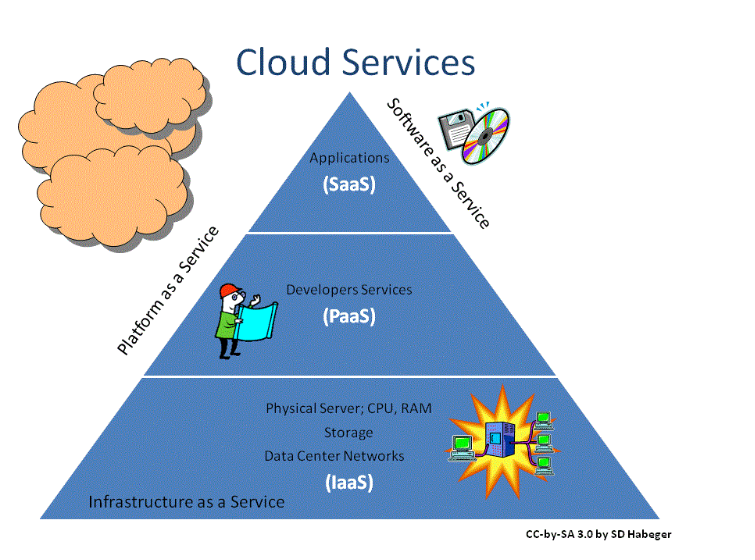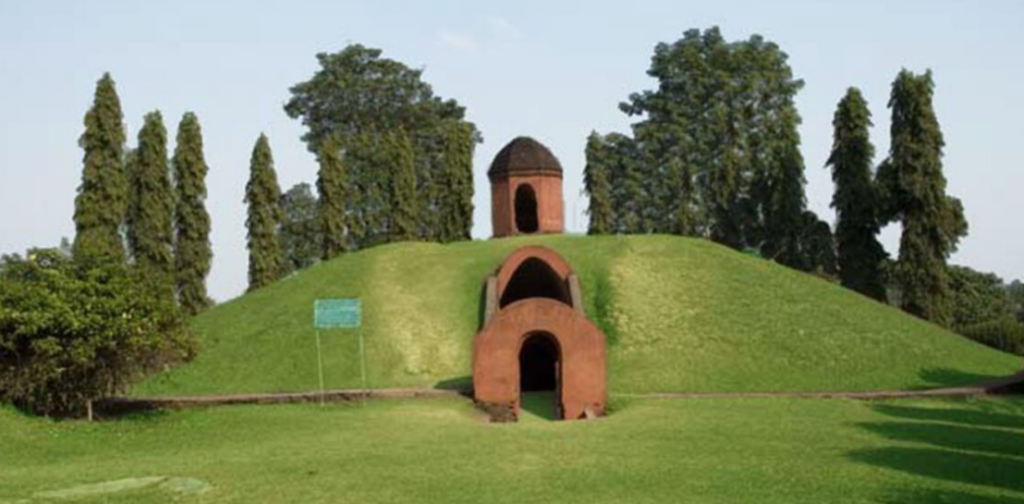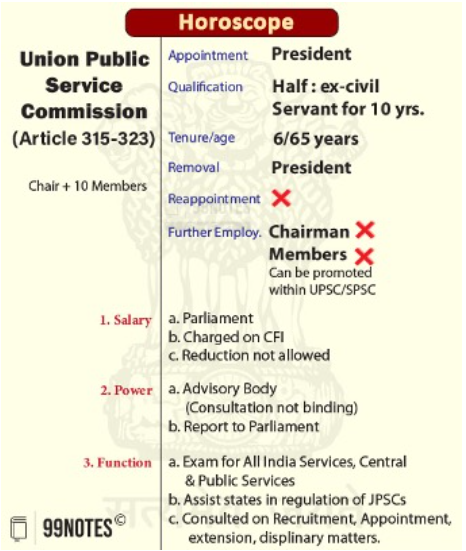20 July 2024 : Daily Current Affairs
1. India plans to enter into carbon crediting mechanism with Japan
- 1. India plans to enter into carbon crediting mechanism with Japan
- 2. Elevating India’s capital goods for a global electronics revolution
- 3. Bureau of Indian Standards signs Memorandum of Understanding with Indian Institute of Science, Bengaluru to promote Standardisation
- 4. Raman Research Institute spinoff company’s tunable lasers could lower costs of quantum optics labs
- 5. Major Microsoft Cloud Outage Disrupts Global Services: Aviation and Financial Sectors in India Hit Hard
- 6. Supreme Court to Examine Governor’s Immunity in Sexual Harassment Case
- Prelims Facts
- 1. Centre Plans to Raise Upper Limit of Short-Term Crop Loans from ₹3 Lakh to ₹5 Lakh Under Modified Interest Subvention Scheme
- 2. BARC Study Finds 60 µg/l Uranium in Drinking Water Safe, Questions BIS’s Stricter 30 µg/l Limit
- 3. Assam’s Moidams Set for UNESCO World Heritage Consideration at WHC’s 46th Session in New Delhi
- 4. Shivaji’s iconic wagh nakh on display at Satara Museum
- 5. UPSC Chairperson Manoj Soni quits 5 years before completion of tenure
- 6. Israeli occupation of Palestinian territory ‘illegal’, says UN top court
(Source – The Hindu, International Edition – Page No. – 11)
| Topic: GS2 – International Relations |
| Context |
|

Analysis of the news:
- India and Japan are set to sign a Memorandum of Cooperation to establish a Joint Crediting Mechanism (JCM) for carbon trading and credit adjustment.
- The mechanism will allocate carbon credits through a structured process, tracked via a registry.
- Projects will be approved by a Joint Committee, and credits will be issued based on reports and allocated to the respective registries of both countries.
- The JCM aims to boost job creation by attracting investments in low-carbon technologies and will be implemented under Article 6.2 of the Paris Agreement.
- A draft Cabinet Note has been prepared, authorising the Ministry of Environment, Forest and Climate Change to sign the MoC.
- The mechanism will ensure emission reductions contribute to both countries’ Nationally Determined Contributions while preventing double counting.
- Japan will also facilitate technology transfer, finance, and capacity building for the mechanism.
| What is carbon trading? |
|
What is carbon trading?
|
| PYQ: Should the pursuit of carbon credit and clean development mechanism set up under UNFCCC be maintained even though there has been a massive slide in the value of carbon credit? Discuss with respect to India’s energy needs for economic growth. (200 words/12.5m) (UPSC CSE (M) GS-3 2014) |
| Practice Question: Discuss the role and impact of Joint Crediting Mechanisms (JCM) in global carbon trading, with specific reference to their implementation between India and Japan. How do such mechanisms contribute to achieving Nationally Determined Contributions under the Paris Agreement? (250 Words /15 marks) |
2. Elevating India’s capital goods for a global electronics revolution
(Source – The Hindu, International Edition – Page No. – 11)
| Topic: GS3 – Indian Economy |
| Context |
|
Analysis of the news:
- The steam engine, a pivotal invention of the Industrial Revolution, transformed economies and symbolises innovation and progress.
- India’s electronics industry, now valued at $115 billion for FY24, aims to quintuple this figure in the next five years, with the global market expected to grow from $4.5 trillion to $6.1 trillion by 2030.
- Central to this growth is the role of capital goods—machinery, tools, and equipment—which are crucial for high-quality, efficient electronics production.
- India must invest in advanced capital goods, develop cutting-edge solutions, and enhance research and development (R&D) to match international standards.
- A significant investment of ₹1,000 crore in a dedicated centre, potentially at the Central Manufacturing Technology Institute (CMTI), could drive innovation and boost domestic manufacturing capabilities.
- Strong intellectual property rights (IPR) protection and a robust R&D ecosystem are essential for fostering innovation and developing indigenous technologies.
- Addressing the demand-supply gap in capital goods, investing in education and training, and fostering industry-academia collaboration are crucial.
- Government policies should support growth through incentives for R&D, ease of business, and stable regulations.
- Adoption of eco-friendly technologies and digital innovations like AI and IoT can enhance competitiveness and sustainability.
- Joint ventures with global firms and attracting skilled diaspora can build domestic capabilities and reduce technology and skill gaps.
| PYQ: Account for the failure of the manufacturing sector in achieving the goal of labour-intensive exports rather than capital-intensive exports. Suggest measures for more labour-intensive rather than capital-intensive exports. (150 words/10m) (UPSC CSE (M) GS-3 2017) |
| Practice Question: Discuss how investing in advanced capital goods and fostering innovation can enhance India’s electronics sector. What strategies should India adopt to address technology and skill gaps and position itself as a global leader in this field? (150 Words /10 marks) |
3. Bureau of Indian Standards signs Memorandum of Understanding with Indian Institute of Science, Bengaluru to promote Standardisation
(Source – https://pib.gov.in/PressReleseDetail.aspx?PRID=2034445 )
| Topic: GS2 – Governance, GS3 – Indian Economy. |
| Context |
|
Analysis of the news:
- The Bureau of Indian Standards (BIS) signed a Memorandum of Understanding (MoU) with the Indian Institute of Science (IISc), Bengaluru, on July 3, 2024, to establish the ‘BIS Standardization Chair Professor’.
- The initiative formalises a strategic collaboration between BIS and IISc to advance standardisation and conformity assessment.
- The BIS Standardization Chair aims to integrate standardisation curricula into academic programs, enhance academic involvement in standardisation activities, and support R&D in the field.
- Key collaborative efforts include:
- Integrating standardisation topics into IISc’s academic programs.
- Involving academia in BIS’s national and international standardisation efforts.
- Providing infrastructure for research and development.
- Co-hosting seminars, workshops, and conferences.
- Sharing knowledge and publishing research findings.
- Exploring Centres of Excellence for standardisation and testing.
- The MoU is part of BIS’s broader strategy to partner with premier institutions like IIT Bombay, IIT Kharagpur, and others to enrich standards formulation and innovation.
- BIS Director General Pramod Kumar Tiwari and IISc Director Prof. Govindan Rangarajan expressed optimism about the partnership’s impact on standards development and technology innovation.
| Importance of standardisation: |
|
What is standardisation?
Importance of standardisation:
|
| Practice Question: Discuss the significance of standardisation in enhancing product quality and market access. How does it contribute to consumer protection, efficiency, and innovation? (150 Words /10 marks) |
4. Raman Research Institute spinoff company’s tunable lasers could lower costs of quantum optics labs
(Source – https://pib.gov.in/PressReleseDetail.aspx?PRID=2034215 )
| Topic: GS3 – Science and Technology |
| Context |
|
Analysis of the news:
- India is set to develop its own multi-channel, tunable laser systems crucial for quantum optics, through nexAtom Research and Instruments, a spin-off from the Raman Research Institute (RRI).
- The technology aims to reduce the high costs of quantum optics labs and has applications in medicine, remote sensing, geo-mapping, and space.
- Raman Research Institute, an autonomous institute of the Department of Science & Technology, has licensed the technology to nexAtom, which will produce these advanced laser systems.
- The tunable lasers, known as External Cavity Diode Lasers (ECDLs), are vital for quantum research and technology labs, addressing needs in quantum communication, metrology, and more.
- nexAtom’s systems are cost-effective, offering integrated packages or sub-systems, reducing the need for additional auxiliary equipment.
- The National Quantum Mission (NQM), a Rs. 6,000 crore initiative, aims to advance quantum technology in India, with RRI contributing to its ecosystem.
- The development includes a provisional Indian patent for a standalone laser system with frequency tunability and precision control.
- nexAtom’s products also include precision time taggers, ultra-fast seed fibre lasers, and Q-switched fibre and diode lasers for diverse applications.
- The venture aims to enhance India’s scientific ecosystem and encourage entrepreneurship in quantum technology. The company’s success will require skilled engineers and PhDs.
5. Major Microsoft Cloud Outage Disrupts Global Services: Aviation and Financial Sectors in India Hit Hard
(Source: Indian Express; Section: Explained; Page: 19)
| Topic: GS3 – Science and Technology |
| Context: |
|
Analysis of News:

About Cloud Services
- Cloud services are infrastructure, platforms, or software that are hosted by third-party providers and made available to users through the internet.
- Cloud services facilitate the flow of user data from front-end clients (e.g., users’ servers, tablets, desktops, laptops—anything on the users’ ends), through the internet, to the provider’s systems, and back.
- Cloud services promote the building of cloud-native applications and the flexibility of working in the cloud. Users can access cloud services with nothing more than a computer, operating system, and internet connectivity.
Cause of the Outage
- Microsoft identified the preliminary cause of the outage as a configuration change in a portion of its Azure backend workloads.
- Azure is Microsoft’s cloud computing platform, and this change led to connectivity failures affecting Microsoft 365 services dependent on these connections.
- The issue was traced to a software update from US cybersecurity firm CrowdStrike for Windows systems. This update, specifically for Falcon, one of CrowdStrike’s main products, malfunctioned and caused system downtimes. Falcon, an endpoint detection and response (EDR) software, is integrated deeply into Windows systems, monitoring activity and scanning for potential threats.
- This deep integration caused widespread impact when the faulty update was deployed, primarily affecting Windows PCs.
Impact on Sectors in India
Aviation Sector
- In India, the aviation sector was the most affected by the outage. Airlines experienced significant disruptions, with hundreds of flights delayed and several canceled.
- Indigo reported increased wait times at contact centers and airports due to system impacts across its network. Akasa Air had to suspend online services and revert to manual operations, while Air India Express and SpiceJet also faced operational challenges.
- The Ministry of Civil Aviation, along with the Airports Authority of India, implemented manual backup systems to maintain continuity and deployed extra staff to assist passengers.
Financial Sector
- The financial sector in India experienced minor disruptions. The Reserve Bank of India reported that at least ten banks and non-banking financial companies (NBFCs) were affected but noted that critical systems of most banks were not on the cloud, limiting the impact.
- Unlike the London Stock Exchange, the Bombay Stock Exchange (BSE) remained unaffected by the Microsoft issue, with operations continuing as normal.
General Users
- Many Windows PC users encountered the infamous ‘blue screen of death,’ a serious system error causing the operating system to shut down or restart unexpectedly.
- This error, caused by the malfunctioning Falcon update, further illustrated the widespread impact of the outage.
Conclusion
- The disruption in Microsoft’s cloud services caused significant operational challenges for various sectors, particularly aviation and finance.
- The government and affected businesses swiftly implemented measures to mitigate the impact and restore services.
- This incident highlights the critical dependence on cloud services and the importance of robust contingency planning for cybersecurity events.
| Practice Question: Examine the causes and impacts of the recent major disruption in Microsoft’s cloud services. Discuss how different sectors in India, particularly aviation and finance, were affected. What does this incident reveal about the reliance on cloud services and the need for robust cybersecurity measures? (250 words) |
6. Supreme Court to Examine Governor’s Immunity in Sexual Harassment Case
(Source: Indian Express; Section: Cover Page; Page: 01)
| Topic: GS2 – Polity |
| Context: |
|
Analysis of News:
Article 361
- Article 361 grants the Governor of a State immunity from legal liability for their official acts and personal acts during their term of office.
- This means that the Governor cannot be held accountable to any court for their official duties, and no criminal proceedings can be initiated against them.
- However, civil proceedings can be brought against them for their personal acts after two months’ notice.
- The Governor also cannot be arrested or imprisoned while in office.
- Additionally, if Governor commits any criminal offense during their term of office, they can be prosecuted once their term ends.
- This ensures that they are not above the law and can be held responsible for any unlawful actions.
Background of the Case
- The Bench, led by Chief Justice of India D.Y. Chandrachud and including Justices J.B. Pardiwala and Manoj Misra, noted that the petition raises questions regarding the interpretation of Clause (2) of Article 361.
- This clause provides that “no criminal proceedings whatsoever shall be instituted or continued against the President, or the Governor of a State, in any court during his term of office.”
- The Bench has asked the woman to make the Union of India a party to the petition and has sought the assistance of Attorney General R. Venkataramani in dealing with the constitutional issue.
Key Arguments and Issues
- Senior Advocate Shyam Divan, representing the petitioner, argued that an investigation should not be deferred indefinitely until the Governor leaves office, as evidence needs to be gathered promptly.
- The woman’s plea emphasizes that the immunity granted under Article 361 should not bar an investigation, especially in cases of serious allegations such as sexual harassment.
- The petitioner contends that the immunity provided by Article 361 was intended to protect the head of state from malicious publicity during their term. However, she questions whether sexual harassment and molestation fall under the duties performed by a Governor, thus warranting blanket immunity.
Petitioner’s Concerns and Requests
- The petitioner has expressed that she is left “remediless” due to the immunity granted to the Governor. She urges the court to frame guidelines and qualifications for the extent to which this immunity can be exercised. The plea asserts that waiting for the accused to leave office could result in delays that undermine the trial and deny justice to the victim.
- She has also sought a probe by the West Bengal Police and protection from the state government. Additionally, she has accused the Governor of revealing her identity and has sought compensation for the loss of reputation and dignity suffered by her and her family.
Response and Actions by the Court
- In response to the plea, the Supreme Court has issued a notice to the West Bengal government, seeking its response.
- The woman had earlier filed a complaint with the Kolkata Police, alleging sexual harassment by the Governor.
- The Calcutta High Court had stayed proceedings in a First Information Report (FIR) against an Officer on Special Duty (OSD-II) to the Governor, who was accused of restraining the woman and pressuring her to refrain from filing a complaint.
Implications and Next Steps
- The Supreme Court’s decision to examine the immunity granted to Governors under Article 361 could have significant implications for the accountability of high-ranking officials.
- The case will test the boundaries of constitutional protections and their applicability in cases involving serious allegations.
- The outcome may lead to clearer guidelines on how immunity can be exercised and ensure that justice is not denied to victims of misconduct by those holding high office.
| Supreme Court on the immunities enjoyed by the Governor |
|
| Practice Question: Discuss the implications of Article 361 of the Indian Constitution in granting immunity to Governors from criminal prosecution. How does this immunity impact the pursuit of justice in cases involving serious allegations such as sexual harassment? Evaluate the arguments for and against such constitutional protections and suggest potential reforms. (250 words/15 m) |
Prelims Facts
1. Centre Plans to Raise Upper Limit of Short-Term Crop Loans from ₹3 Lakh to ₹5 Lakh Under Modified Interest Subvention Scheme
(Source: Indian Express; Section: Govt & Politics; Page: 06)
| Context: |
|
Analysis of News:
What is Modified Interest Subvention Scheme (MISS)?
- Kisan Credit Card scheme was introduced for farmers, to empower them to purchase agriculture products and services on credit at any time.
- To ensure that the farmers have to pay a minimal interest rate to the bank, the GoI introduced Interest Subvention Scheme (ISS), now renamed as Modified Interest Subvention Scheme (MISS).
- It aims to provide short term credit to farmers at subsidized interest rates.
Features of MISS
- Under this scheme, short term agriculture loan upto Rs. 3.00 lakh is available to farmers engaged in Agriculture and other allied activities including Animal Husbandry, Dairying, Poultry, fisheries etc. at the rate of 7% p.a.
- An additional 3% subvention (Prompt Repayment Incentive – PRI) is also given to the farmers for prompt and timely repayment of loans.
- Therefore, if a farmer repays his loan on time, he gets credit at the rate of 4% p.a.
- For enabling this facility to the farmers, GoI provides Interest Subvention (IS) to the Financial Institutions offering this scheme.
- This support is 100% funded by the Centre, it is also the second largest scheme of DA&FW as per budget outlay and coverage of beneficiaries.
Who gets the subvention?
- The lending institutions include- Public Sector Banks, Private Sector Bank, Small Finance Banks, Regional Rural Banks, Cooperative Banks and Computerized PACS directly ceded with commercial banks.
2. BARC Study Finds 60 µg/l Uranium in Drinking Water Safe, Questions BIS’s Stricter 30 µg/l Limit
(Source: Indian Express; Section: Express Network; Page: 10)
| Context: |
|
Analysis of News:
Historical Standards and Recent Changes
- For many years, the acceptable level of uranium concentration in drinking water in India was set at 60 µg/l by the Atomic Energy Regulatory Board (AERB).
- In 2021, the Bureau of Indian Standards (BIS) revised this limit to 30 µg/l, aligning it with the World Health Organization (WHO) recommendations.
- Prior to this change, BIS safety standards for drinking water, last updated in 2012, did not specifically mention uranium but set a limit for all radiological substances based on their radioactive decay.
Arguments Against the New Standard
- The BARC study, published in the journal Environmental Science and Pollution Research, argues that the new BIS standards could lead to unnecessary purification costs without yielding health benefits.
- While excessive uranium content is linked to kidney diseases and cancer, the study, supported by WHO research, suggests that small concentrations of uranium in drinking water pose no significant health threat.
- It highlights that there is no evidence of cancer in animals consuming uranium compounds at these levels.
Researchers and Methodology
- The study was conducted by five BARC scientists—Sanjay K Jha, Aditi Patra, Gopal Verma, Vivekanand Jha, and Dinesh Aswal—from the Health Safety and Environment Group.
- They emphasize that WHO’s standard of 30 µg/l is a guideline, not a mandatory safety limit, explaining why national standards vary across countries.
3. Assam’s Moidams Set for UNESCO World Heritage Consideration at WHC’s 46th Session in New Delhi
(Source: Indian Express; Section: Express Network; Page: 10)
| Context: |
|
Analysis of News:

The centuries old royal burial site of Ahom Dynaty in Assam, Charaideo district.
About UNESCO World Heritage Sites
A World Heritage site is a landmark or area with legal protection by an international convention administered by the United Nations Educational, Scientific and Cultural Organisation (UNESCO).
- World Heritage sites are designated by UNESCO for having cultural, historical, scientific or other forms of significance.
- The sites are judged to contain “cultural and natural heritage around the world considered being of outstanding value to humanity.”
Nomination Process and Historical Significance
- The nomination dossier for the Moidams was submitted more than a decade ago and is currently on the tentative list of UNESCO World Heritage Sites.
- Being on this tentative list is the first step towards achieving full recognition as a World Heritage Site.
- The Moidams are among 28 sites proposed for inscription on the list, which will be reviewed according to three categories: natural, mixed, and cultural.
Importance for the Northeastern Region
- The potential inclusion of the Moidams on the World Heritage List is significant for the northeastern region of India.
- It highlights the unique cultural heritage of the area and brings international attention to its historical and archaeological importance.
- The recognition could also boost tourism and local pride in the region’s ancient traditions and historical sites.
4. Shivaji’s iconic wagh nakh on display at Satara Museum
(Source – The Hindu, International Edition – Page No. – 4)
| Context |
|
Analysis of the news:
- The historic wagh nakh, a tiger claw-shaped weapon, used by Maratha warrior king Chhatrapati Shivaji Maharaj to kill Bijapur Sultanate general Afzal Khan, is now on display at the Satara Museum.
- The weapon was brought to India from London’s Victoria and Albert Museum on July 17.
- The display marks the 350th anniversary of Shivaji Maharaj’s ascension to the throne.
- The wagh nakh will be on display at the Satara Museum for the next seven months.
- A grand welcome was organized in Satara for the weapon.

| The Battle of Pratapgarh: |
|
5. UPSC Chairperson Manoj Soni quits 5 years before completion of tenure
(Source – The Hindu, International Edition – Page No. – 5)
| Context |
|
Analysis of the news:

- Tenure of Chairman: The Chairman of the UPSC is appointed by the President of India and holds office for a term of six years or until the age of 65, whichever is earlier. (Article 316 of the Constitution)
- Tenure of Members: UPSC members, appointed by the President, also serve for a term of six years or until they reach the age of 65, whichever is earlier. (Article 316 of the Constitution)
- Resignation: The Chairman and members of the UPSC can resign by addressing their resignation to the President of India. (Article 316 of the Constitution)
- Removal: The Chairman and members can be removed by the President on the grounds of misbehaviour or incapacity, following an inquiry conducted by the Supreme Court. (Article 317 of the Constitution)
6. Israeli occupation of Palestinian territory ‘illegal’, says UN top court
(Source – The Hindu, International Edition – Page No. – 12)
| Context |
|
Analysis of the news:
- The International Court of Justice (ICJ) issued an advisory opinion declaring Israel’s occupation of Palestinian territory as “illegal” and urging its immediate end.
- The opinion, not legally binding, adds pressure on Israel amid ongoing conflict and criticism over its policies and settlement activities.
- ICJ presiding judge Nawaf Salam emphasised Israel’s obligation to cease all new settlement activities and evacuate settlers from occupied lands.
- Israeli Prime Minister Benjamin Netanyahu dismissed the opinion as a “decision of lies,” rejecting the court’s stance on the legality of the occupation.
- Palestinian Foreign Minister Riyad Al-Maliki welcomed the opinion as a historic moment for the Palestinian cause.
- The opinion also calls for international action to address the occupation, as voiced by Hamas in response to the ruling.
| International Court of Justice (ICJ): |
|


 How carbon credit mechanism works
How carbon credit mechanism works
